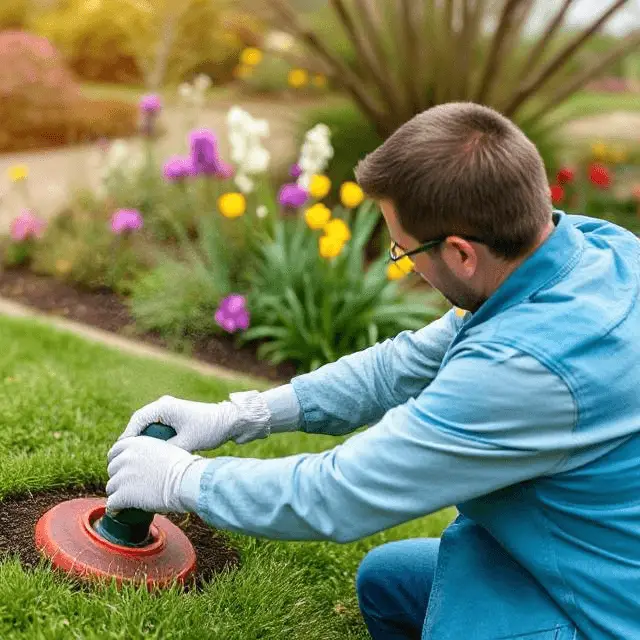When Do Acorns Fall From Oak Trees?
Last Updated on April 27, 2020 by Duncan
If you have oak trees, you must be wondering, when do acorns fall from oak trees?
Knowing when acorns fall from the trees helps you to prepare for them so that you can find an acorn rake, acorn vacuum, tarp, or simply prepare yourself mentally for them.
Generally, acorns from oak trees mature in early fall, so you should expect them to start falling during this time. While this is the case, some mature earlier or later than this, Others will even take more than one season to fall.
What oak trees produce acorns the fastest?
You can group oak trees into three categories: white oaks, red oaks, and black oaks. White oaks have smooth leaves and produce sweet-tasting acorns that are often eaten by squirrels and other animals.
The acorns from the tree mature in only one season.
Black and red oaks have bristle-tipped leaves and hairy-lined acorn shells and are often bitter. They mature at the end of the second growing season.
Red oaks bloom in May and grow between 50 and 75 feet tall, and they prefer growing in full sun and light to medium watering. Their flowers are yellowish-green in color.
White oaks also bloom in May, although some variations such as the swamp white oak bloom in April.
The white tree grows between 50 and 80 feet and spreads the same amount while the white oak grows between 50 and 60 feet in both dimensions.
Black oaks bloom between April and May, and they are loved by many as they are easy to maintain. They can grow between 50 and 60 feet in both dimensions and don’t handle shade well.
To answer your question, which oak trees produce acorns the fastest, I would say white oak trees produce acorns the fastest as acorns from white oak trees mature in one season while those from the red and black oak take two seasons to mature after flower pollination.
What about the acorns produced?
Red oaks produce acorns that are flat with saucer-shaped cups, and they appear in large numbers before the tree turns 40 years old. The acorns from white oaks are ¾ inches long with warty-scaled cups.
The acorns from black oak are of a similar size and have a saucer shape whose cup covers are roughly half their size. You will find most of the acorns on black oaks that are two to three years.
Do all live oak trees produce acorns?
Live trees are expected to produce acorns, but this often doesn’t happen due to many reasons.
Healthy trees with dominant crowns (crowns higher and larger than those of surrounding trees) will produce acorns while the unhealthy, suppressed trees won’t produce or produce fewer ones.
The genetics of the oak tree also plays a vital role. Trees from highly productive parents are more likely to produce acorns than those from less productive parents.
What happens when acorns fall?
Unfortunately, most acorns don’t sprout and produce new oak trees. This is because they serve as a source of food for wildlife, fungi, and insects.
Acorns are an excellent source of food and protein for squirrels, turkeys, blue jays, deer, black bears, chipmunks, and other rodents.
When do oak tree catkins stop falling?
Catkins are oak tree male flowers, and they have several small flowers arranged like beads on a string along a central stem. Catkins produce pollen in mid-April that significantly affects people with allergies.
The catkins shed the pollen one or two weeks after they appear, and they do this for three to four days. Pollen shedding will be delayed by rain and high humidity resulting in poor acorn production.
How many acorns do oak trees produce?
It’s hard to tell as year to year acorn production is influenced by plenty of factors such as genetic makeup of the oak family. As mentioned above, trees from healthy trees will produce more acorns than those from unhealthy trees.
If it’s cold, the freezing temperatures during the flowering period will kill the flowers resulting in small acorn crops.
Acorn production will also be influenced by high winds and excessive rainfall, insects, humidity, nutrition, and soil moisture.
When the weather isn’t right, oak trees will abort the acorns to conserve their resources and redirect them to more critical life-sustaining processes.
What to do with fallen acorns?
There are plenty of things you can do with the fallen acorns. I have detailed five things to do with fallen acorns here. Go ahead and read it.
How to stop oak trees from producing acorns
While oak trees provide shade to your home and give your property an elegant appeal, the acorns they release can be a nuisance.
In addition to giving your yard an ugly look, they also attract animals such as squirrels that are not only scaring, but they can also destroy your plants.
If you don’t like the idea of raking or vacuuming acorns, you can stop the oak trees from producing acorns altogether. There are plenty of ways in which you can do it. The most common ones being:
Prune overgrown shoots and branches
Just like other trees, when you leave oak trees unchecked, the branches grow out of control, increasing the surface area and produce a lot of acorns that you don’t want.
To reduce the production, you should prune overgrown shoots and branches. While this won’t completely stop the acorns from producing acorns, it will reduce the amount produced, so you have an easy time maintaining them.
You need to inspect your trees regularly and if you notice any branches that are getting out of control, prune them. In addition to this reducing the amount of acorns that the tree produces, it also makes the tree more attractive.
Remove the flowers by hand.
After frost has passed, flowers will begin appearing slowly then quickly after that. Using a ladder, reach all the branches and remove all the flowers by hand.
Every day, you should look out for the flowers and remove them as soon as possible.
While this method is highly effective and significantly reduces the number of acorns that the tree will produce, it makes sense when you have just a few oak trees.
If you have many trees, the method might not be practical unless you are ready to spend a lot of money hiring people to help with the flower removal.
Spray the oak tree with hormones
If you have the skills, you can do the spraying by yourself, but for ideal results, hire a reputable tree service provider. Before you do the spraying, discuss the amount of spraying that will be ideal for your tree.
Remember that too much hormone will harm the tree while not enough will allow flowing and acorn production. You need to work with an expert who understands how to go about it.
Apply a growth regulator
From its name, the growth regulator reduces fruit development on trees and shrubs. Once you apply it to a tree, the tree produces fewer acorns.
When applying the regulator, you should note that it leaves the trees susceptible to diseases, so you should opt for it as a last resort.
Fun facts about acorns
- There are over 90 species of oak trees in North America. All of the species produce acorns.
- Oak trees in North America produce more acorns annually than in any other regions.
- Oak trees have greenish hard to identify female flowers that are wind-pollinated
- Acorns that belong to trees in the red oak group take two growing seasons to mature while acorns in the white oak group mature in only one season.
- One huge oak can drop up to 10,000 acorns in a mast year.
- Masting takes a lot of energy, so the oak trees grow slowly in a mast year and grow well the year after
In conclusion…
Most of the acorns fall in September or October, but it varies from one oak tree species to the other. Once they fall, there are plenty of things you can do with them.
You can collect them and dispose of them, or you can shred them and make them into mulch.
If you don’t like the trouble of collecting the acorns, you should stop the oak trees from producing acorns. You can do this by spraying them, plucking out the flowers, among many other things.


